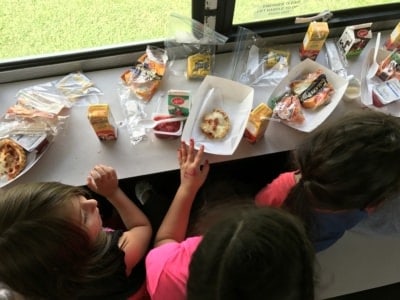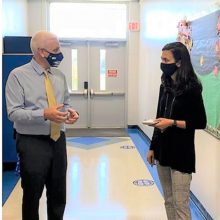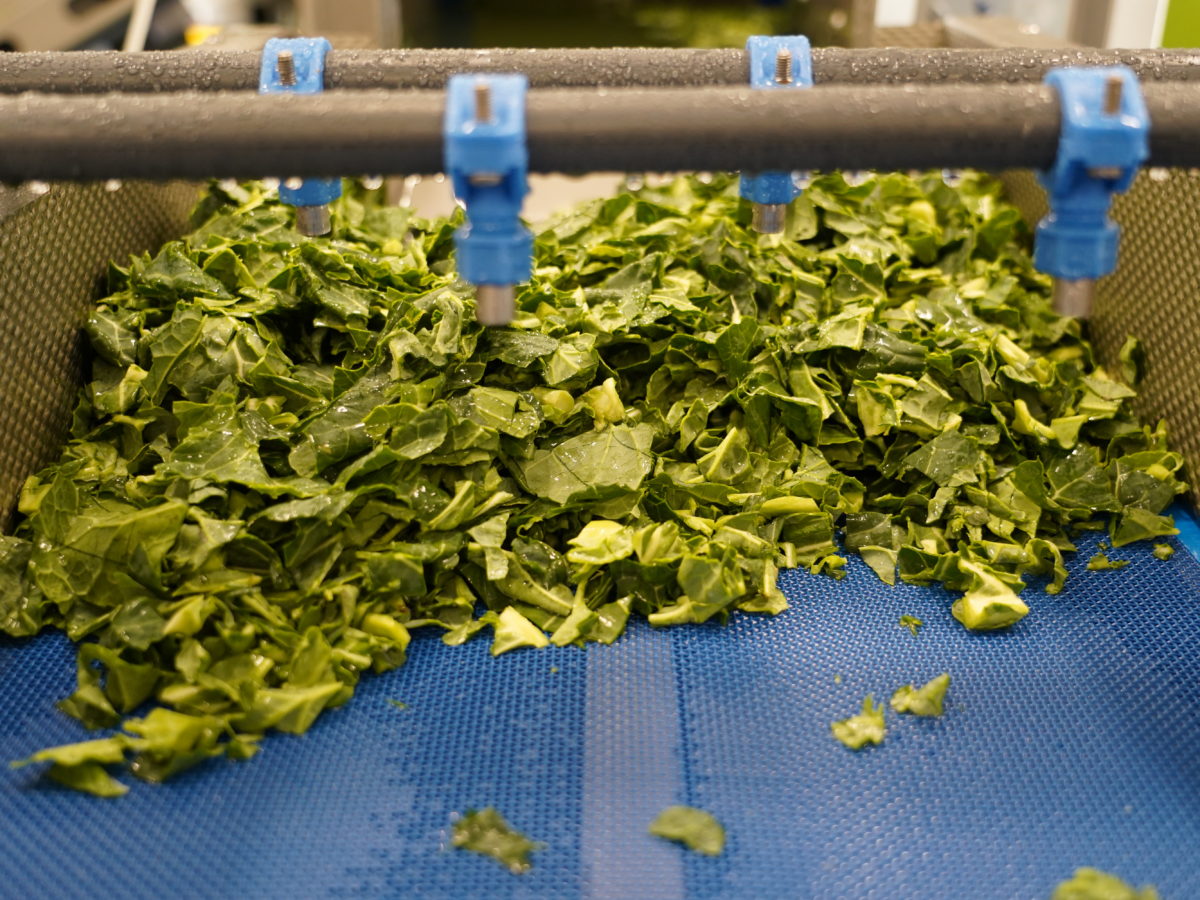
Share this story
- "Every county has schools, every county also has farms." Here's how Working Landscapes is advancing farm to school efforts through its food hub, with the goal of building stronger local economies and more resilient food systems.
- When school cafeterias don't have the capacity to process whole local produce, food hubs offer a solution: They wash, chop, and bag produce to make local food more readily usable and provide wider access to markets for small farmers.
|
|
This is the third article in a three-part series on farm-to-school efforts in North Carolina. The first article is about the Farm to School Coalition of North Carolina, and the second article is on a district-owned farm in Halifax County Schools.
As the country’s leading producer of sweet potatoes, it may seem common sense that school cafeterias across North Carolina could readily purchase and serve locally grown sweet potatoes in their school lunches. But incorporating fresh produce from local farmers into school meals — one of the core pillars of farm to school — is often not as simple as it may seem. Many school nutrition departments lack the equipment and staffing capacity necessary to wash, cut, and process raw produce from local farms, and these challenges have been further exacerbated by the COVID-19 pandemic.
Enter food hubs: facilities that manage the aggregation, storage, processing, distribution, and/or marketing of locally produced foods. By coordinating these activities, food hubs offer value-added products that are more readily usable and provide wider access to markets for smaller farmers.
For example, a single food hub might purchase sweet potatoes from multiple small farmers, wash, chop, and bag the sweet potatoes so they are ready to cook, and then fulfill a large order from a local school district that no one small farm would have been able to fulfill on their own.
There are at least nine food hubs across North Carolina, and since 2013, Warren County has been home to a food hub with a particular focus on providing local produce to schools: Working Landscapes.
Working Landscapes gets involved in farm to school
Established in Warren County in 2010 by Carla Norwood and Gabriel Cumming, Working Landscapes is a nonprofit rural development organization. Originally from Warren County, Norwood wanted to work on improving the quality of life in her community with a focus on the natural and cultural assets of the region. And although Working Landscapes is not limited to food or agricultural issues, Cumming says local food has been a primary emphasis from the beginning.
Working Landscapes established a small food hub in 2012 that began processing fresh cut produce for schools in 2013. Since then, the hub has grown and evolved, taking on its own brand and name – ByWay Foods. Today, the food hub includes a vegetable processing facility where local produce is diced, washed, and bagged, as well as a commercial kitchen where frozen meals are prepared for seniors. The food hub’s products – such as bags of diced sweet potatoes or chopped collards – are then sold to other organizations, including school nutrition departments.
Working Landscapes also partners with schools on educational programming focused on increasing awareness of locally grown food and food systems across northeastern North Carolina. “What’s Growing On” is their farm-to-school education program that offers a set of lesson plans focused on a local harvest each month. The organization also partners with school cafeterias to plan taste tests and get local produce and meat incorporated in school meals.
Related Readings
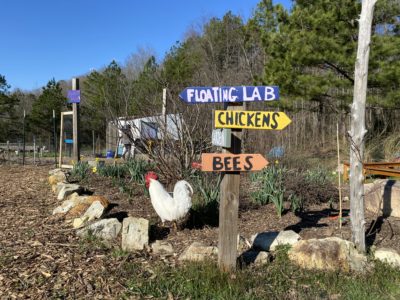
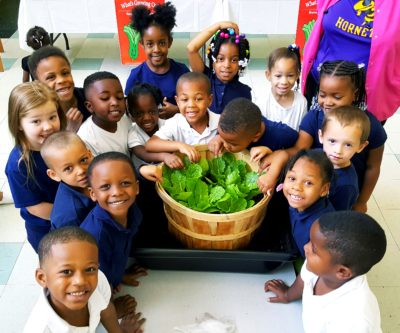
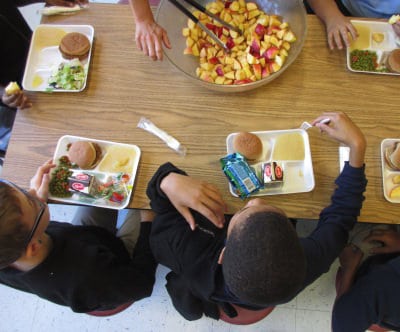
From farm to food hub to school
“We find ourselves in the somewhat unlikely position at this point of being North Carolina’s only farm-to-school hub,” said Cumming.
Although there are other food hubs across North Carolina, Cumming says ByWay Foods is the only one, to his knowledge, that is working with schools on a regular basis. To do so, ByWay Foods aggregates produce from local farms, processes it at their facility – which includes washing, chopping, and bagging – and then distributes it to school districts either directly or through intermediaries. Since its inception in 2013, ByWay Foods has provided products to 25 school districts, according to Cumming.
One of the unique things about ByWay Foods is that it was a farm-to-school food hub from the very beginning, which Cumming says allowed them to develop products with and for child nutrition programs. For example, when local nutrition directors shared that they did not have the staff and facility capacity to process fresh, local produce, ByWay Foods developed a fresh cut produce process as a way to make buying local fruits and vegetables more convenient for busy school cafeterias.
“We basically take a heterogenous product out of the field and make it into a homogenous product through the fresh cut process,” said Cumming.
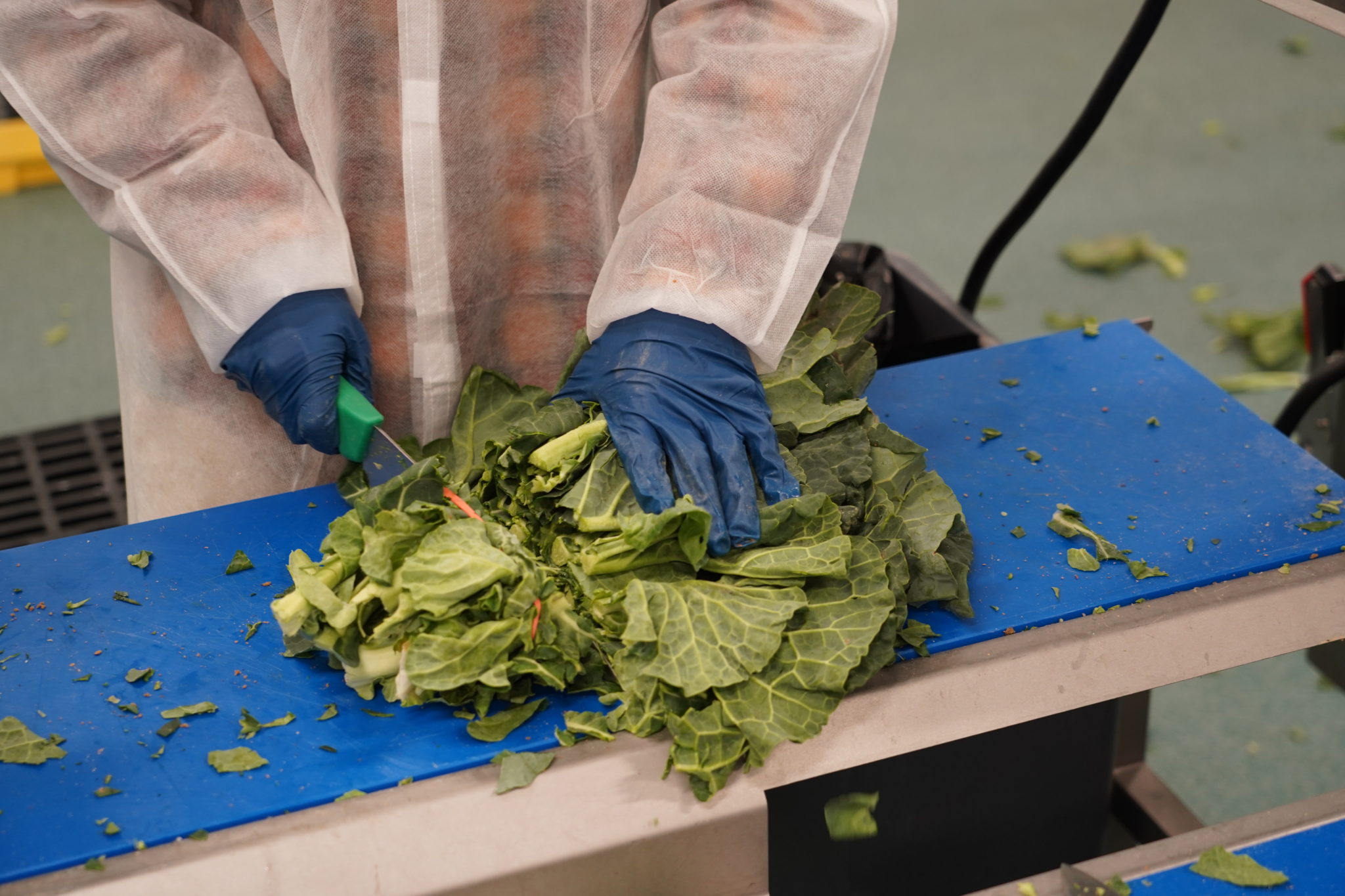
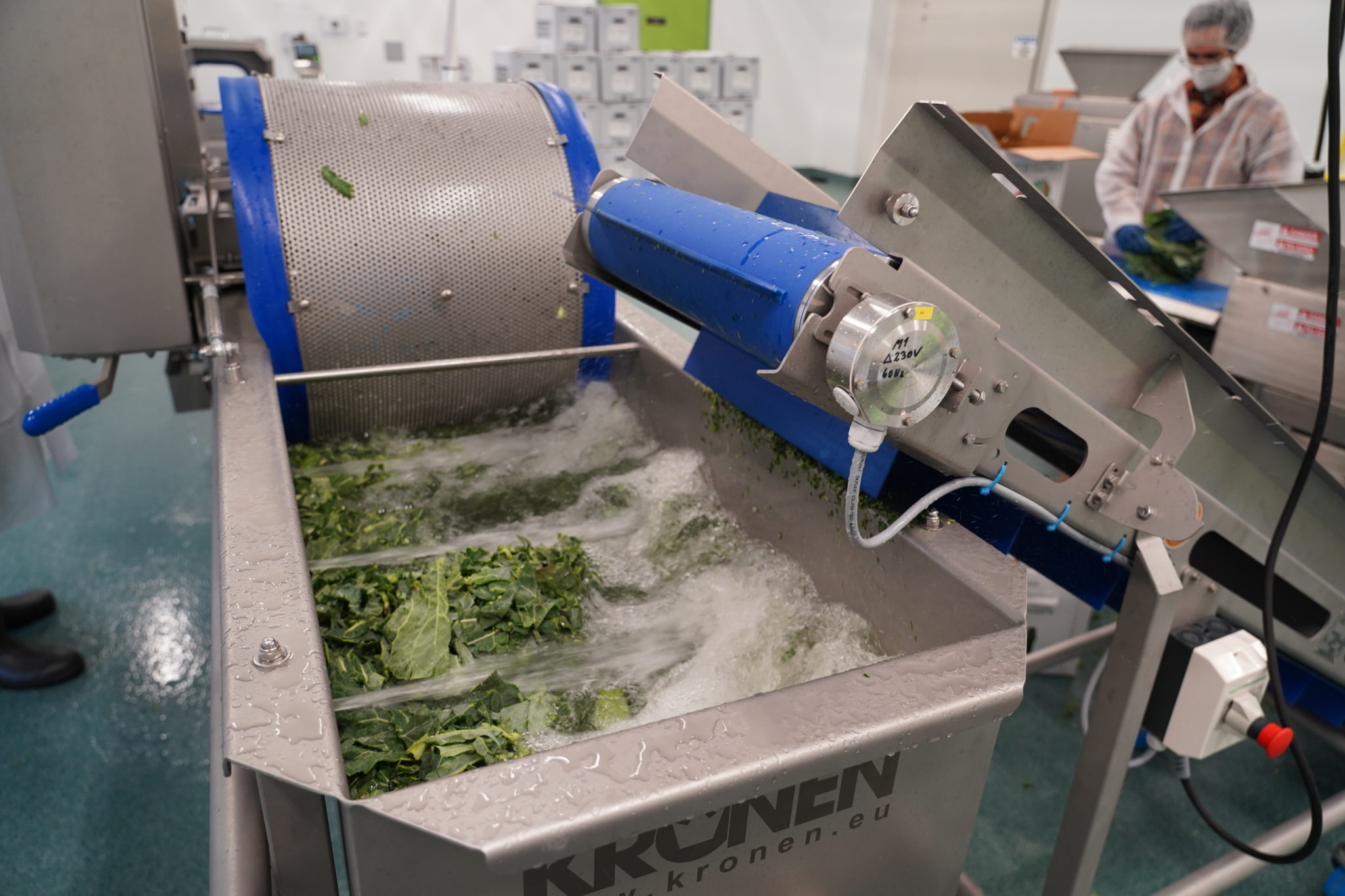
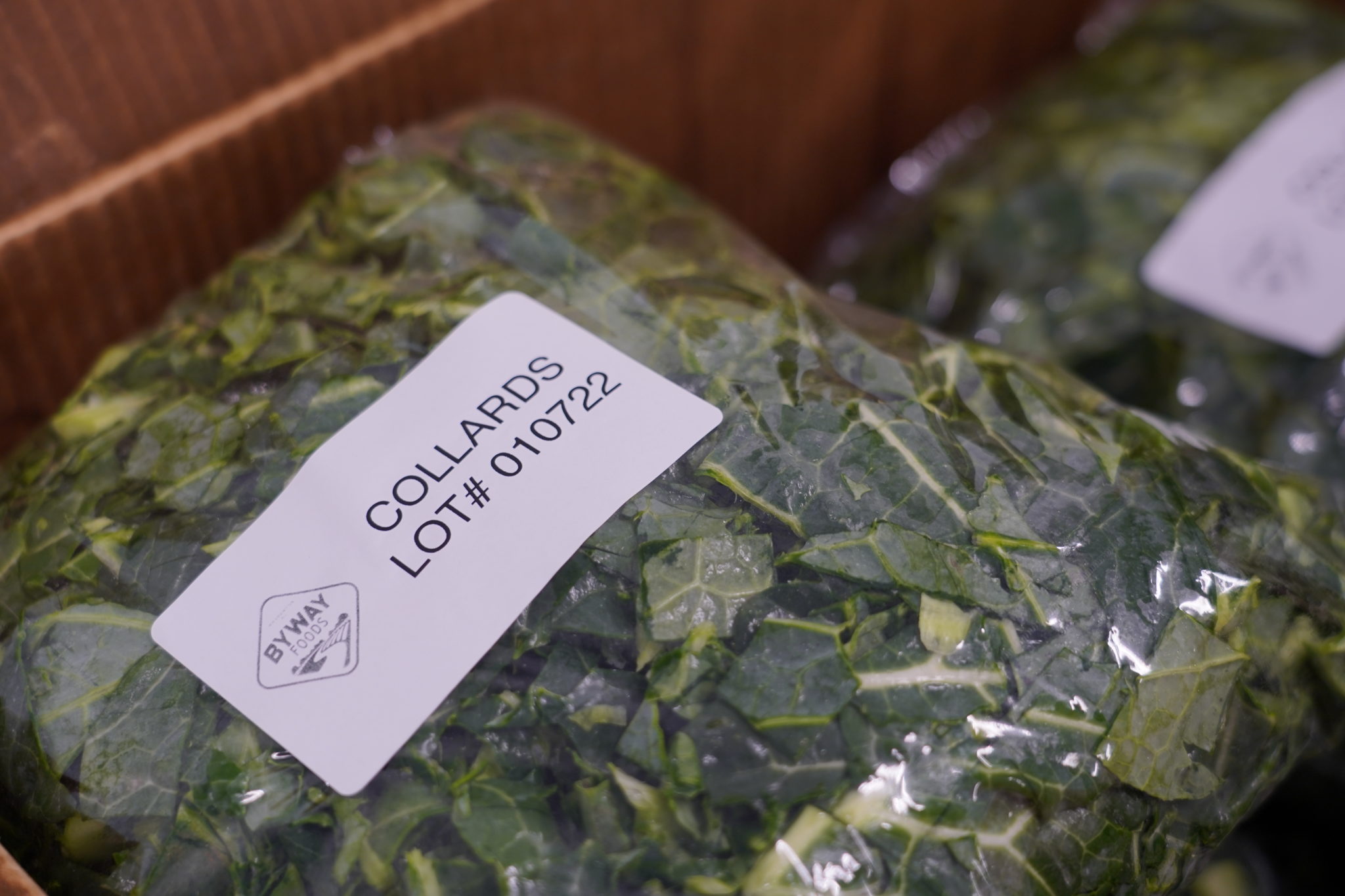
When it comes to purchasing produce from local farms, Cumming says ByWay Foods uses a nested sourcing strategy that focuses on the smallest farms, most local farms, and farms owned by people of color first. For example, sourcing from a farmer of color in Warren County is the food hub’s highest priority. If that’s not available, they look to regional farms in adjacent counties in the northeastern part of North Carolina and then expand farther beyond that if necessary.
Although purchasing local produce is the food hub’s priority, Cumming said that it is important for the food hub to continue to fill orders and maintain a market space for local farms. Therefore, when local farms don’t have the necessary product available, ByWay Foods will purchase non-local products.
“It will ensure that that market still exists when they [local farms] do have the product, and that we can gradually actually grow the pipeline for local products,” said Cumming.
Advancing farm to school in the face of challenges
Working Landscapes helps overcome many of the barriers facing both farmers and schools when it comes to incorporating local produce into school meals. For one, North Carolina requires all farms that sell products to school nutrition departments to be Good Agricultural Practices (GAP) certified, a process that can be both lengthy and costly, especially for smaller farms. To address this, Working Landscapes provides technical assistance and funding support to help small farmers receive their GAP certification.
When Working Landscapes first began in 2010, Cumming says there were no GAP-certified farmers in Warren County – and there still are not very many. But Cumming says that GAP certification will only remain a barrier as long as demand for local produce is insufficient.
“People talk a lot about supply challenges in farm to school – like there aren’t enough farmers who are qualified and there’s not enough product available from local farmers,” said Cumming. “That, to me, is the wrong way to look at it. The way to look at it is that demand is insufficient and insecure.”
Cumming says larger investments in purchasing local food would help provide the necessary demand to justify small farmers making the investments needed to receive and maintain their GAP certification. For example, commitments from school districts or from the state to purchase larger quantities of local products over a certain duration at a set price would provide a stable demand signal to local farmers – one that Cumming says is currently lacking.
To alleviate demand challenges, many states choose to supplement existing school nutrition budgets with funds for the purchase of local food. In Virginia, the state department of education is partnering with regional food hubs to deliver roughly $2.2 million in locally produced food to school nutrition departments across the state through a pilot program funded by the USDA’s Supply Chain Assistance Funds.
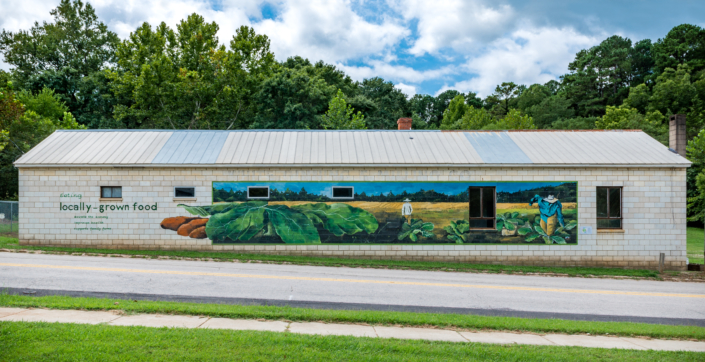
Harnessing the economic benefits of farm to school
“Schools are quite simply the largest buyers of food in most rural counties in North Carolina,” said Cumming.
The economic value of farm to school is what motivated Working Landscapes to enter this work originally. While working on behalf of North Carolina farmers to create more opportunities for them, Cumming says schools became an important wholesale market for Working Landscapes to consider — especially because schools purchase large quantities of food in a reliable way, which is rare in rural areas. According to the National Farm to School Network, studies find that each dollar invested in farm to school stimulates an additional $0.60-$2.16 of local economic activity, and farm to school has been shown to establish long-term revenue streams for individual farmers.
However, Cumming says the farmers best positioned to take advantage of the economic benefits of farm to school are only a tiny fraction of the largest farms in North Carolina, as they have the output necessary to fill large statewide orders from school districts. These larger farms often provide their products to schools through the N.C. Farm to School Program, a procurement program operated by the state’s Department of Agriculture & Consumer Services that provides school districts the option to purchase local produce.
Given this context, Cumming says food hubs provide the opportunity for smaller farmers to get involved and reap the benefits of farm to school because the hub aggregates produce from multiple farms, enabling it to fill larger orders. For example, in March, diced sweet potatoes from Working Landscapes were offered to districts statewide as part of the NC Farm to School Program.
“If harnessed, the purchasing power of schools in our state can have a tremendous impact on our state’s agricultural economy and economy overall,” said Cumming. “Every county has schools. Every county also has farms.”
For more on the other benefits of farm to school, including public health and education, read this article.
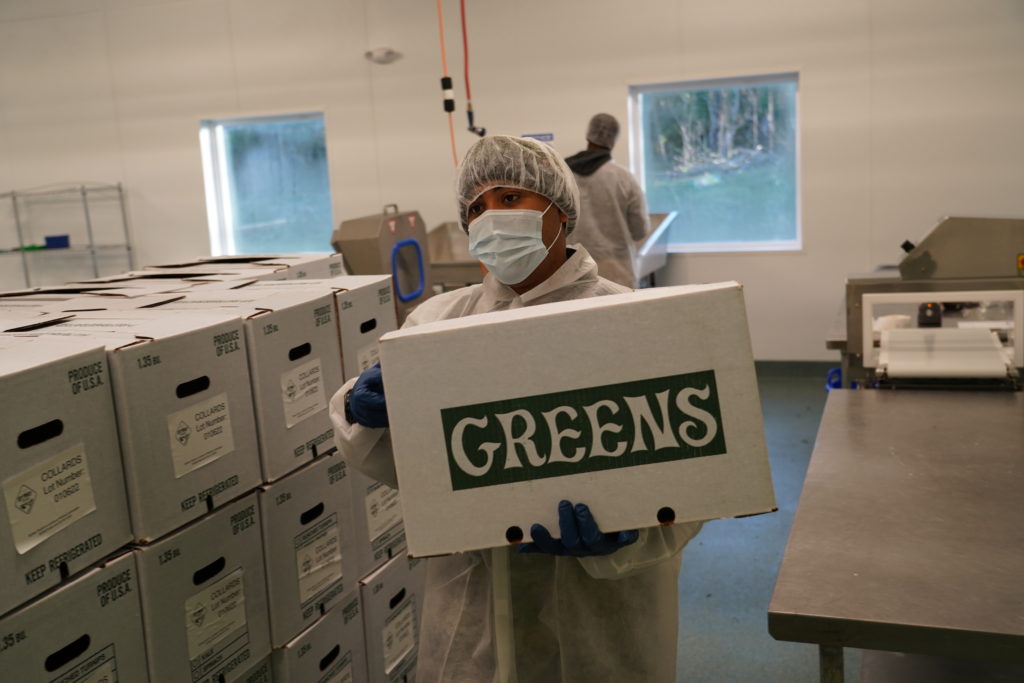
Looking ahead
Given shifts in both the local and federal farm to school landscape, Cumming believes this moment holds great opportunities to advance farm to school efforts across North Carolina.
At the local level, Cumming says, “The food hubs in North Carolina are networked in a way they never were before,” which means they have access not only to their own local farmers but to a network of small farmers across the state.
“We’re working on ways that those efforts can be united to really bring a lot more small growers into the farm to school pipeline,” he said.
At the federal level, the USDA announced a $1.5 billion investment to strengthen school meal program supply chains in December 2021, including $200 million that is specifically for cooperative agreements to purchase local foods for schools, focusing on historically underused producers. In North Carolina, the USDA is providing up to a total of $42.4 million from these investments, including $5.7 million specifically for the purchase of local food for schools. To put that in perspective, Cumming says current farm-to-school purchases in North Carolina total roughly $1 million.
In the long run, Cumming believes the biggest opportunity of farm to school is its role in building strong regional food systems with supply chains that can better withstand economic shocks, from pandemics to hurricanes.
“It’s both the opportunity and the threat — food systems as they exist are not resilient. Farm to school gives us the opportunity to create food systems that are much more resilient,” said Cumming. “Schools and other institutions can be the anchors of resilient regional food systems.”
Recommended reading


